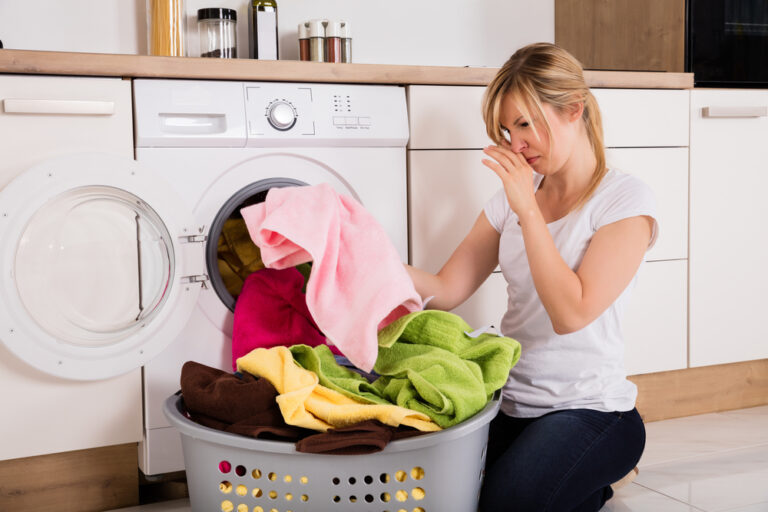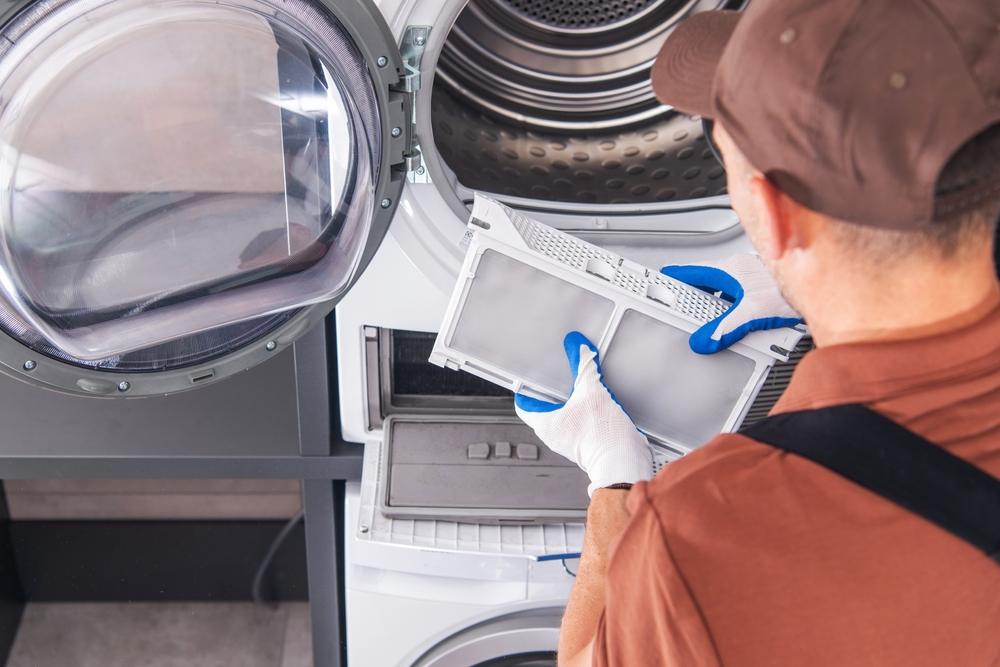Milwaukee homes run washers hard. Between lake-effect humidity, winter salt on work clothes, and kids’ sports gear, machines see heavy, messy loads. That pressure exposes weak parts fast. The good news: most washer issues show the same patterns across Riverwest, Bay View, Wauwatosa, and the North Shore. Knowing the likely cause helps decide whether to try a quick check or book Milwaukee washer repair before a small problem becomes a flood or a burned-out motor.
The washer will not drain
This is the number one service call across Milwaukee zip codes. If water sits in the tub after the cycle, start with the simple stuff. Coin and lint build-up in the drain pump filter is common after winter when pockets hide debris. On front-loaders, a small access door near the bottom usually hides the filter. A slow drain paired with a buzzing sound from the pump hints at a jammed impeller.
Top-load machines often clog where the drain hose hooks into the standpipe. If the hose is shoved too far down, it can siphon and confuse the control. A kinked hose behind a tight laundry closet in East Side condos shows up more than it should. When the pump runs but water does not move, the pump is likely failing. If the tub stops mid-cycle and the unit flashes a code, a bad lid lock or pressure switch may be the culprit. Technicians see this a lot after six to eight years of use.
Homeowners can check the filter, smooth out the hose, and clear visible lint. If the washer throws repeated drain errors, hums without moving water, or leaks when trying to drain, schedule Milwaukee washer repair. A pump replacement runs far less than a floor repair and usually takes under an hour on site.
Loud banging during spin
Unbalanced loads happen, but chronic banging means something else. In Milwaukee bungalows with older basements, slightly sloped floors throw machines off level. A washer that walks an inch during spin will wreck suspension rods or shock absorbers within months. Loose shipping bolts left in a new front-loader cause violent shaking on day one, though that usually gets caught during installation.
If the noise sounds like metal-on-metal, the basket bearing may be wearing out. That deep growl that builds with speed is a classic symptom on some front-load models between year seven and ten. Suspension failures show up as a hollow thumping and a tub that sags by hand. A stretched drive belt can squeal and slip before the spin ramps up.
A level check with a small bubble level and a quarter turn on the front feet can calm many machines. Even out the load and run a rinse and spin to test. If the washer still walks or growls, a pro should evaluate the shocks, rods, and bearings. Letting it go risks a torn door boot or cracked outer tub, which turns a simple Milwaukee washer repair into a replacement conversation.
Leaks on the floor
A puddle under the washer sets off alarms in Shorewood and Bay View homes with finished basements. Front-loaders often leak from the door boot when pet hair and detergent film collect in the folds. A tear at the six o’clock position is common from coins or bra wires. Top-loaders drip from the inlet valve at the back when the internal screens clog with Milwaukee’s mineral-rich water and increase backpressure.
Other frequent spots include the drain pump housing, the tub-to-pump hose, and the pressure hose on top-load units. A leak only during fill points to hoses or inlet valves. A leak only during drain points to the pump or lower hoses. A constant drip even when off can be a cracked valve.
Homeowners can snug hose clamps and inspect visible hoses with a flashlight. If the leak is inside the cabinet or the boot is torn, book service quickly. Water wicks into subfloors and ruins cabinets, and insurance deductibles outpace the cost of a typical seal or hose replacement.
Washer smells musty
Milwaukee’s humidity gives mold an easy foothold. Front-load door boots and detergent drawers grow biofilm when high-efficiency detergent gets overdosed or when cold-only cycles dominate. Top-loaders can smell, too, usually from residue under the basket or in the outer tub.
Run a hot tub clean cycle with an oxygen-based washer cleaner once a month. Use the right HE detergent and measure it; most families do fine with 1 to 2 tablespoons per load. Leave the door and drawer cracked open. If odor returns within days, buildup may be deep and the boot or drawer may need removal and manual cleaning. Persistent odor after cleaning can signal a drain trap that never fully clears, which warrants Milwaukee washer repair to inspect the pump and pressure system.
Won’t start or keeps pausing
A dead control panel is not always a failed board. In older Milwaukee duplexes, shared laundry rooms see tripped GFCI outlets and weak extension cords. Washers draw high current during start and spin; they need a dedicated outlet. A unit that powers on but refuses to start often has a bad lid switch or door lock. If the cycle starts and stops within minutes, the machine may be losing the door signal or misreading water level due to a pinched pressure hose.
Modern machines display error codes that point to these issues. For example, codes for “lid lock” or “door” are common on high-usage machines. A door lock replacement is a straightforward repair. A control board is more involved and should be diagnosed before parts are ordered, since a simple wiring break can mimic a board failure.
Fills too slowly or overfills
Mineral deposits from Lake Michigan water can clog inlet valve screens in as little as 12 to 24 months, especially in Bay View and St. Francis where older plumbing sheds rust flakes. Slow fill on cold but not hot points to the cold valve or the supply. Swap hoses to test. Overfilling or unending fill points to a stuck valve or a failed pressure sensor. If water continues to flow with the washer unplugged, the inlet valve is mechanically stuck open and must be replaced.
This is one area where a quick DIY can save a service call: turn off the water, remove the hoses, and clean the small screens at the valve. If the screens are clean and the fill is still slow, the valve itself is likely failing. For overfill, shut water off and schedule Milwaukee washer repair immediately to avoid damage.
Clothes still soapy or stiff
Detergent residue stems from cold-only cycles, overloading, or too much detergent. High-efficiency washers use far Milwaukee washer repair cost uniquerepair.com less water than older models; overdosing is the norm. Hard water pushes this over the edge, leaving clothes stiff and dull. A hot maintenance cycle and a switch to the measured cap line, not a full cap, usually corrects it. If residue persists, the washer may have a weak recirculation pump or a worn agitator dogs set in top-loaders, which reduces mechanical action. A tech can check these moving parts quickly.


Control panel errors after power events
Thunderstorms off the lake cause quick voltage dips. Control boards throw phantom errors or lock buttons. Unplugging for five minutes can reset many models. If errors return immediately, moisture intrusion at the user interface or a failing board may be the cause. Basement laundry spaces near utility sinks see splash damage that corrodes ribbon cables. Prompt diagnosis beats repeated part failure.
Quick homeowner checks before calling
- Confirm the washer is level front to back and side to side; adjust feet and lock them down. Clean the drain pump filter and check the drain hose for kinks or overly deep insertion. Inspect inlet hose screens, then run a hot tub clean cycle with an oxygen-based cleaner. Verify the outlet is dedicated and the plug sits firmly; avoid extension cords. Load size: fill the drum to about three-quarters with room for clothes to tumble.
If these steps do not change symptoms, move to professional service. Repeated attempts can worsen damage, especially on leaks, grinding noises, or electrical smells.
Why fast service matters in Milwaukee homes
Basements here are often finished, and older floor drains can be slow. A small leak during spin can travel under luxury vinyl planks and swell subfloors. A bad bearing left to growl can throw a belt, cut a boot, and take the outer tub with it. Early intervention saves hundreds. Homeowners who call at the first sign of slow drain or off-balance shake usually end with a same-day fix and no secondary damage.
What a pro typically does on site
A technician arrives with common parts: pumps, belts, door locks, inlet valves, suspension rods, shocks, and clamps. They check error history, run diagnostic mode, and test components under load. Most Milwaukee washer repair visits wrap in 45 to 90 minutes if parts are on the truck. Bearing jobs and outer tub replacements take longer and may require a return visit. Honest shops give clear go or no-go advice if a repair approaches 50 percent of the cost of a quality replacement.
Brands and age patterns seen locally
Front-loaders from popular brands tend to need door boots around years five to eight, pumps around years six to nine, and occasional control updates. Top-load impeller models see lid lock and suspension issues by year five in heavy-use homes. Classic agitator models last longer but may need a clutch or drive dogs. Basement humidity speeds corrosion on some models, especially around control panels and harness connectors.
Service coverage by neighborhood
Technicians run calls daily in Bay View, Riverwest, Wauwatosa, West Allis, Shorewood, Glendale, Whitefish Bay, Walker’s Point, the East Side, and the Third Ward. Narrow stairwells, tight laundry closets, and old cast-iron standpipes are familiar obstacles, and the team brings the right fittings and low-profile hoses to work around them.
Ready to get the washer back on track
If the washer is loud, leaking, not draining, or throwing codes, it is time to act. Unique Repair Services, Inc. offers Milwaukee washer repair with practical diagnostics, upfront pricing, and parts stocked for same-day solutions on common models. Call or book online for a convenient window. Share the model number from the door sticker and a brief description of the symptom. That helps load the right parts on the truck and shortens the visit.
Clean clothes should not require a wrestling match with the washer. A simple fix today keeps laundry day smooth and protects the home from avoidable water damage.

Unique Repair Services, Inc. provides washer repair in Milwaukee, WI. Our local technicians service all washer types and brands, fixing leaks, drainage problems, spin issues, and electrical faults. We help Milwaukee homeowners get their laundry back on track quickly using trusted repair methods and quality parts. From front-load to top-load models, we restore washers to reliable working condition. We focus on clear communication, dependable service, and fair pricing for every job in the Greater Milwaukee Area.
Unique Repair Services, Inc.
Milwaukee, WI, USA
Phone: (847) 231-2812
Website: https://uniquerepair.com/service-areas/milwaukee-wi
Social Media: Facebook, LinkedIn
Find Us on Map: Google Maps